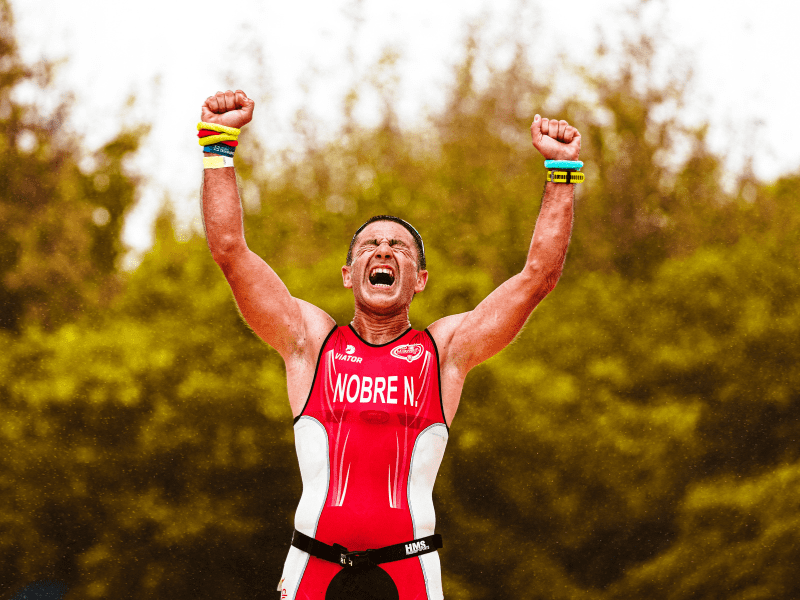Why a 16-Week Marathon Training Plan is Essential for Success
Preparing for a marathon requires dedication, commitment, and a well-structured training plan. A marathon is not just a race; it’s an endurance challenge that tests both physical and mental strength. To ensure success on race day, it is crucial to follow a comprehensive marathon training plan.
One of the most popular and effective training plans is the 16-week marathon training program. This long-distance running program provides runners with a systematic approach to gradually build endurance, improve speed, and prevent injuries. Whether you are a beginner or an experienced runner, this timeline allows ample time for proper preparation.

The 16-week timeframe allows runners to gradually increase their mileage while incorporating essential elements such as speed work, tempo runs, long runs, and cross-training sessions. It strikes the perfect balance between pushing your limits and avoiding overtraining or burnout.
Following a structured marathon training plan not only helps in physical conditioning but also mentally prepares you for the challenges ahead. It builds confidence as you progress through each phase of the program, knowing that you are steadily working towards your goal.
Moreover, this timeline takes into account potential setbacks or minor injuries that may occur during training. It allows flexibility to adjust your schedule without compromising your overall progress.
Table of Contents
The Crucial Role of a 16-Week Marathon Training Plan for Success
If you are serious about completing a marathon successfully, investing in a 16-week marathon training plan is essential. It provides the necessary guidance and structure to prepare both your body and mind for the grueling distance ahead. So lace up your running shoes and embark on this transformative journey towards achieving your marathon goals!
Setting realistic goals and assessing your fitness level are crucial steps in embarking on a marathon training journey. By understanding your current fitness level and setting achievable targets, you can effectively plan your training program and increase your chances of success.
Before setting marathon goals, it is important to assess your fitness level accurately. This can be done through various methods such as a physical fitness test, consultation with a professional trainer, or self-assessment based on previous running experiences. By determining your running ability, you can establish a baseline from which to set realistic goals.

When setting marathon goals, it is essential to be mindful of your current fitness level and any limitations you may have. Setting overly ambitious targets without considering your abilities can lead to disappointment or even injury. Instead, focus on gradual progress and aim for incremental improvements that align with your current capabilities.
To set achievable targets, consider factors such as the time available for training, previous running experience, and any potential obstacles that may affect your progress. It is also helpful to break down larger goals into smaller milestones that can be accomplished along the way. This not only provides a sense of accomplishment but also allows for adjustments if necessary.
Remember that setting realistic goals does not mean settling for mediocrity; rather, it ensures that you are working towards objectives that are within reach while still challenging yourself. By assessing your fitness level accurately and setting achievable targets, you will be better equipped to plan an effective training program and increase the likelihood of achieving success in your marathon journey.
The Importance of a Comprehensive Training Schedule for Marathon Preparation
When it comes to preparing for a marathon or any long-distance race, having a comprehensive training schedule is essential. A well-structured 16-week training plan can help runners gradually build their endurance, improve their speed, and reduce the risk of injury.
One of the key elements of a marathon training schedule is the gradual increase in weekly mileage. This allows runners to adapt to the demands of running longer distances over time. The schedule typically starts with lower mileage in the early weeks and progressively increases as the body becomes more accustomed to the workload.
In addition to increasing mileage, a comprehensive training plan includes key workouts that target different aspects of running performance. These workouts may include tempo runs, intervals, long runs, and recovery runs. Each workout has a specific purpose – from building aerobic capacity and speed to improving lactate threshold and overall endurance.
The structure of the training plan ensures that runners have sufficient rest days and recovery periods built into their schedule. This helps prevent overtraining and allows the body to adapt and become stronger.
By following a well-designed 16-week training schedule that incorporates these building blocks – gradual mileage increase, key workouts, rest days – runners can maximize their chances of achieving their marathon goals while minimizing the risk of injury or burnout.

Proper nutrition and hydration play a crucial role in maximizing your performance as a long-distance runner, especially when preparing for a marathon. Developing a well-rounded marathon nutrition plan and implementing effective pre-race fueling strategies can significantly enhance your endurance and overall race experience. Additionally, understanding the importance of hydration and following specific tips tailored for long-distance runners can help you maintain optimal performance throughout your training and on race day.
Creating a marathon nutrition plan involves identifying the right balance of macronutrients (carbohydrates, proteins, and fats) to support your energy needs during training and racing. It is essential to consume adequate carbohydrates before your runs to provide glycogen stores for sustained energy. This can be achieved by incorporating complex carbohydrates like whole grains, fruits, vegetables, and legumes into your meals leading up to the race.
Pre-race fueling strategies are crucial for ensuring that you start the marathon with optimal energy levels. This typically involves consuming easily digestible carbohydrates in the form of gels, sports drinks, or energy bars about 1-2 hours before the race begins. Experimenting with different types of fuel during training runs can help you determine what works best for you.
Hydration is equally important for long-distance runners as it helps regulate body temperature, maintain electrolyte balance, and prevent dehydration-related performance decline. Along with regular fluid intake throughout the day leading up to the race, it is recommended to have a hydration plan during training runs as well. Sipping water or sports drinks at regular intervals can help replenish lost fluids.
During longer races like marathons, it’s essential to listen to your body’s thirst cues but also ensure that you don’t wait until you feel thirsty before hydrating. Aim to drink enough fluids during each hour of running without overhydrating or causing discomfort.
Fueling your body properly through a well-designed marathon nutrition plan and following effective pre-race fueling strategies, along with maintaining adequate hydration, is vital for optimizing your performance as a long-distance runner. By prioritizing nutrition and hydration, you can enhance your endurance, reduce the risk of fatigue and cramping, and ultimately achieve your running goals.
Embracing Cross-Training in Athletes’ Regimens: A Focus on Runners
Cross-training has become an integral part of many athletes’ training regimens, including runners. By incorporating different forms of exercise into their routine, runners can reap numerous benefits that directly enhance their endurance and prevent injuries.
One of the primary advantages of cross-training for runners is the ability to target different muscle groups and improve overall strength. Strength training exercises specifically tailored for marathoners can help build muscular endurance and power, ultimately enhancing running performance. Incorporating exercises such as squats, lunges, deadlifts, and core workouts can strengthen key muscles involved in running mechanics and improve stability.
In addition to building strength, cross-training also provides a valuable opportunity for active recovery. Engaging in low-impact activities like swimming or cycling on rest days allows the body to recover from the repetitive impact of running while still maintaining cardiovascular fitness.
Furthermore, cross-training helps prevent injuries by addressing muscle imbalances and overuse injuries common among runners. By engaging in activities that target different muscle groups or movement patterns than running, individuals can correct any muscular imbalances that may lead to injury. For example, incorporating yoga or Pilates into a runner’s routine can improve flexibility and balance while reducing the risk of strains or sprains.
It is important to note that when engaging in cross-training activities as a runner, it is crucial to choose exercises that complement rather than hinder running performance. The goal is not to replace running but rather supplement it with other forms of exercise that enhance overall fitness and reduce the risk of injury.

Incorporating cross-training exercises into a runner’s training regimen offers numerous benefits such as improved endurance, increased strength, active recovery periods, and injury prevention. By diversifying their workouts with targeted strength training exercises and complementary activities like swimming or yoga, runners can optimize their performance while minimizing the risk of injuries associated with repetitive motion.
The tapering period before a marathon race day and implementing effective recovery strategies post-training runs are crucial for ensuring peak performance on race day.
During the tapering period, which typically lasts between one to three weeks before the race, runners gradually reduce their training volume and intensity. This allows the body to recover from the accumulated fatigue while maintaining fitness levels. The purpose of tapering is to strike a balance between maintaining training adaptations and allowing the body to rest and fully recover.
Recovery strategies post-training runs are equally important in optimizing performance on race day. Adequate rest, nutrition, hydration, and sleep play a vital role in facilitating muscle repair and glycogen replenishment. Incorporating activities such as foam rolling, stretching, or using compression garments can also aid in reducing muscle soreness and enhancing recovery.
Furthermore, mental preparation techniques are essential for achieving peak performance on race day. Visualization exercises can help runners mentally rehearse their race plan, visualize success, and build confidence. Positive self-talk and focusing on achievable goals can also contribute to mental resilience during the race.
By understanding and implementing proper tapering techniques, adopting effective recovery strategies post-training runs, and incorporating mental preparation techniques into their routine, runners can optimize their performance on marathon race day.
Executing a successful marathon performance requires more than just physical endurance. It also involves strategic planning and smart pacing to avoid burnout and hitting the infamous “wall.” In this section, we will explore some race day strategies that can help you achieve your best marathon performance yet.
One of the key aspects of marathon racing tactics is pacing. It’s crucial to find a pace that allows you to maintain a steady rhythm throughout the race. Starting too fast can lead to early fatigue, while starting too slow may leave you with excess energy towards the end. Finding your optimal pace requires understanding your own capabilities and training accordingly.
Another effective strategy is to break down the race into smaller segments or milestones. Instead of focusing on the entire distance, focus on reaching each mile marker or aid station. This approach helps mentally divide the race into more manageable portions, making it easier to stay motivated and focused.
Fueling and hydration are equally important during a marathon. Develop a plan for when and how often you will consume fluids and energy gels or snacks along the course. This ensures that your body remains properly fueled throughout the race, reducing the risk of hitting a physical wall due to depletion.
Additionally, consider incorporating negative splits into your racing strategy. Negative splitting involves running the second half of the race faster than the first half. By conserving energy in the early stages, you can gradually increase your pace as you progress through the course, resulting in a strong finish.
Lastly, mental preparation plays a significant role in executing a successful marathon performance. Visualize yourself crossing that finish line with confidence and determination during training sessions leading up to race day. Positive self-talk and focusing on small achievements along the way can help maintain motivation during challenging moments.
By implementing these racing tactics during your next marathon event, you can optimize your performance potential while minimizing burnout or hitting that dreaded wall often experienced by runners. Remember, every runner is unique, so experiment with different strategies during your training to find what works best for you.
Achieving Marathon Success: The Importance of Dedication, Commitment, and a 16-Week Plan
Marathon training requires dedication, commitment, and a well-structured plan. By starting your 16-week marathon training plan today, you can set yourself up for success and achieve your running goals.
A marathon is a grueling endurance event that tests both physical and mental strength. It requires careful preparation to ensure that you have the stamina and resilience to complete the 26.2-mile journey.
Your training plan should include a combination of long runs, speed workouts, cross-training, and rest days. Long runs help build endurance, while speed workouts improve your overall pace. Cross-training activities such as swimming or cycling can help prevent injuries and provide variety to your routine.

Consistency is key when it comes to marathon training. Following a structured plan for 16 weeks allows your body to gradually adapt to the increased mileage and intensity of the workouts. It also gives you enough time to recover between sessions, reducing the risk of overtraining or burnout.
Setting realistic goals is important in any training program. Whether you aim to complete your first marathon or improve your personal best time, having specific targets will keep you motivated throughout the process.
Remember that proper nutrition, hydration, and rest are crucial components of successful marathon training. Fueling your body with nutritious foods and staying hydrated will optimize performance on race day. Additionally, allowing ample time for rest and recovery ensures that your muscles repair and strengthen after each workout.
Starting your 16-week marathon training plan today is the first step towards achieving your running goals. With dedication, consistency, proper nutrition, and rest, you can conquer the challenge of completing a marathon with confidence. Lace up those running shoes and embark on this rewarding journey!.
Also Read: Best Cardio Workout For Weight Loss: A Comprehensive Overview

